Roman Vishniac #Photographe
Roman Vishniac est né en 1897 à Pavlovsk, près de Saint-Pétersbourg. Fuyant les persécutions dont est victime la population juive, il s'installe à Berlin en 1920. Lorsqu'en 1933 il sent le danger qui menace les Juifs d'Europe, il se donne pour mission de photographier les communautés d'Europe centrale et orientale, parcourant la Pologne, la Lituanie, la Lettonie, la Hongrie et la Tchécoslovaquie. Il en rapporte 16 000 clichés.
Chronique La première rétrospective de Roman Vishniac est à voir à Paris ! Livre Roman Vishniac en Photo Poche : itinéraire d'un pionnier de la photographie documentaire humaniste Exposition « De Berlin à New York, 1920-1975 » : Roman Vishniac au Musée d'art et d'histoire du Judaisme Exposition Howard Greenberg Gallery presents "Affirmation" an exhibition with David “Chim” Seymour and Roman Vishniac Exposition Collective Exhibition « Portraits of the photographer » in Berlin Exposition Streetlife Photographs from our collections 1930-1975 Exposition Roman Vishniac - Un monde disparu - Photographies Modifier l'image
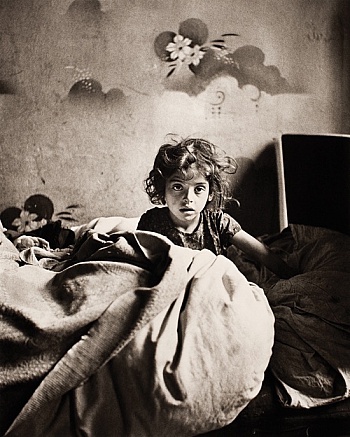 Il y a quelques semaines, Actuphoto vous faisait découvrir le livre Roman Vishniac publié chez Acte Sud. Aujourd'hui, les clichés et le travail titanesque du photographe sont à retrouver au Musée d'art et d'histoire du Judaïsme jusqu'au 25 janvier. Après New York (à l'International Center of Photography en 2013) et Amsterdam (Joods Historisch Museum en 2014) c'est à donc Paris que l'on retrouve l'exposition Roman Vishniac : de Berlin à New York, 1920-1975.
Pour rappel, Roman Vishniac est l'un des photographes qui a le plus documenté la vie juive en Europe, notamment durant la montée du nazisme. De son propre chef ou à la demande d'organisations humanitaires, Vishniac réalisa l...
Il y a quelques semaines, Actuphoto vous faisait découvrir le livre Roman Vishniac publié chez Acte Sud. Aujourd'hui, les clichés et le travail titanesque du photographe sont à retrouver au Musée d'art et d'histoire du Judaïsme jusqu'au 25 janvier. Après New York (à l'International Center of Photography en 2013) et Amsterdam (Joods Historisch Museum en 2014) c'est à donc Paris que l'on retrouve l'exposition Roman Vishniac : de Berlin à New York, 1920-1975.
Pour rappel, Roman Vishniac est l'un des photographes qui a le plus documenté la vie juive en Europe, notamment durant la montée du nazisme. De son propre chef ou à la demande d'organisations humanitaires, Vishniac réalisa l...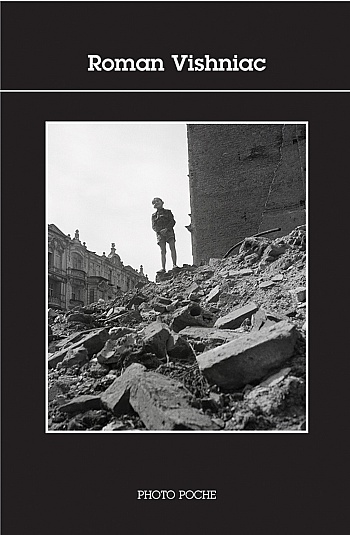 Quand on observe la richesse du travail de Roman Vishniac et l'étendu des lieux qu'il immortalisa, de Berlin à New York en passant par Paris, Cracovie ou Varsovie, on est tenté de penser que le photographe a eu plusieurs vies. Toujours considéré aujourd’hui comme l'un des précurseurs de la photographie documentaire humaniste, les éditions Actes Sud lui consacrent un Photo Poche qui retrace son œuvre pionnière.
Né en Russie en 1897 dans une famille juive aisée, Roman Vishniac se passionne rapidement pour la photographie. Resté seul étudier la zoologie et la biologie à Moscou, il rejoint cependant sa famille à Berlin en 1920. C'est dans les rues de la jeune capitale de la république de V...
Quand on observe la richesse du travail de Roman Vishniac et l'étendu des lieux qu'il immortalisa, de Berlin à New York en passant par Paris, Cracovie ou Varsovie, on est tenté de penser que le photographe a eu plusieurs vies. Toujours considéré aujourd’hui comme l'un des précurseurs de la photographie documentaire humaniste, les éditions Actes Sud lui consacrent un Photo Poche qui retrace son œuvre pionnière.
Né en Russie en 1897 dans une famille juive aisée, Roman Vishniac se passionne rapidement pour la photographie. Resté seul étudier la zoologie et la biologie à Moscou, il rejoint cependant sa famille à Berlin en 1920. C'est dans les rues de la jeune capitale de la république de V... Après New York (International Center of Photography, 2013) et Amsterdam (Joods Historisch Museum, avril-août 2014), le Musée d’art et d’histoire du Judaïsme présente l’exposition « Roman Vishniac : de Berlin à New York, 1920-1975 » . Rassemblant environ 220 œuvres, dont de nombreux inédits, elle propose une réévaluation complète de l'ensemble de la production de Vishniac, depuis ses débuts à Berlin jusqu'à l’Après-guerre aux États-Unis.
Plus qu’aucun autre photographe, Roman Vishniac a profondément influencé notre image de la vie juive en Europe orientale. On lui doit le témoignage photographique le plus emblématique et le plus fréquemment publié de ce monde à la veille de son anéantissement – ensemble exp...
Après New York (International Center of Photography, 2013) et Amsterdam (Joods Historisch Museum, avril-août 2014), le Musée d’art et d’histoire du Judaïsme présente l’exposition « Roman Vishniac : de Berlin à New York, 1920-1975 » . Rassemblant environ 220 œuvres, dont de nombreux inédits, elle propose une réévaluation complète de l'ensemble de la production de Vishniac, depuis ses débuts à Berlin jusqu'à l’Après-guerre aux États-Unis.
Plus qu’aucun autre photographe, Roman Vishniac a profondément influencé notre image de la vie juive en Europe orientale. On lui doit le témoignage photographique le plus emblématique et le plus fréquemment publié de ce monde à la veille de son anéantissement – ensemble exp...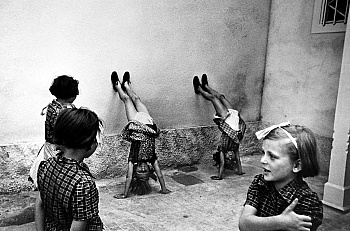 New York – A two-person exhibition of photographs by David “Chim” Seymour and Roman Vishniac from the 1930s – 1950s will be on view at Howard Greenberg Gallery Two, 41 East 57th Street, from February 1 – February 23, 2013. Among the great masters of European photography, Chim and Vishniac are famed for photojournalism and social documentary depicting tumultuous events of the 20th century, as well portraits of some of the most important celebrities of the time.
The exhibition at Howard Greenberg Gallery coincides with retrospective exhibitions of work by both photographers at the International Center for Photography in New York City. We Went Back: Photographs from Europe 1933 – 1956 by Chim and Roman Vishniac Rediscovered will be on view from January 18 - May 5, 2013.
...
New York – A two-person exhibition of photographs by David “Chim” Seymour and Roman Vishniac from the 1930s – 1950s will be on view at Howard Greenberg Gallery Two, 41 East 57th Street, from February 1 – February 23, 2013. Among the great masters of European photography, Chim and Vishniac are famed for photojournalism and social documentary depicting tumultuous events of the 20th century, as well portraits of some of the most important celebrities of the time.
The exhibition at Howard Greenberg Gallery coincides with retrospective exhibitions of work by both photographers at the International Center for Photography in New York City. We Went Back: Photographs from Europe 1933 – 1956 by Chim and Roman Vishniac Rediscovered will be on view from January 18 - May 5, 2013.
...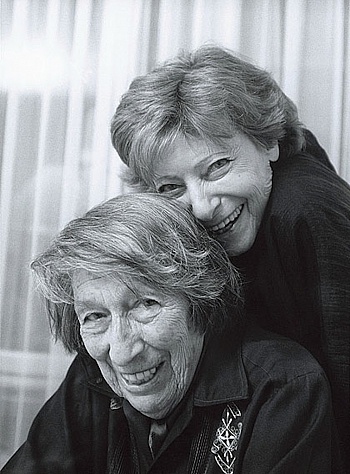 ANITA NEUGEBAUER – photo art basel.
Portrait of the Photographer, Gallery Owner and Collector
‘I wanted to get to know the people who reveal my inner life with their pictures.’
Anita Neugebauer (born in 1916 in Berlin) studied photography at the Contempora – Lehrateliers für neue Werkkunst in Berlin in the 1930s. She is among the avantgarde of photo gallery owners and her collection includes masterpieces classic 20th-century photography. Her gallery photo art basel (1976 – 2004) was one of the first to promote the public presentation of photography at a time when it was not yet being collected as art or exhibited in museums. Neugebauer’s photo exhibitions with Robert Doisneau, Gisèle Freund, Ruth Mayerson Gilbert, René M&aum...
ANITA NEUGEBAUER – photo art basel.
Portrait of the Photographer, Gallery Owner and Collector
‘I wanted to get to know the people who reveal my inner life with their pictures.’
Anita Neugebauer (born in 1916 in Berlin) studied photography at the Contempora – Lehrateliers für neue Werkkunst in Berlin in the 1930s. She is among the avantgarde of photo gallery owners and her collection includes masterpieces classic 20th-century photography. Her gallery photo art basel (1976 – 2004) was one of the first to promote the public presentation of photography at a time when it was not yet being collected as art or exhibited in museums. Neugebauer’s photo exhibitions with Robert Doisneau, Gisèle Freund, Ruth Mayerson Gilbert, René M&aum... Streetlife - Photographs from our collections 1930-1975
In addition to the Soulas exhibition 50 original photographs from our collections, titled "Streetlife" are on show. The selection documents a forty-year development of reportage photography.
During the Weimar Republic the first photo shots in public areas -on the streets- documenting focal pointsand events were done by Alfred Eisenstaedt or Tim Gidal. Outstanding photographers working for the illustrated magazines "Life" and "Stern", such as Jerry Cooke, Robert Lebeck, Stefan Moses and Thomas Hoepker continued in this tradition.
Again and again public streets became a stage for crucial contemporary historical happenings: so for example in the photo series, shot by Roman Vishniac of the Schtetln of Polish Jews, before their exp...
Streetlife - Photographs from our collections 1930-1975
In addition to the Soulas exhibition 50 original photographs from our collections, titled "Streetlife" are on show. The selection documents a forty-year development of reportage photography.
During the Weimar Republic the first photo shots in public areas -on the streets- documenting focal pointsand events were done by Alfred Eisenstaedt or Tim Gidal. Outstanding photographers working for the illustrated magazines "Life" and "Stern", such as Jerry Cooke, Robert Lebeck, Stefan Moses and Thomas Hoepker continued in this tradition.
Again and again public streets became a stage for crucial contemporary historical happenings: so for example in the photo series, shot by Roman Vishniac of the Schtetln of Polish Jews, before their exp...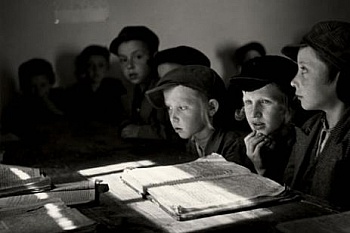 “Je n'ai pas pu sauver mon peuple, j'ai seulement sauvé son souvenir. Pourquoi ai-je fait cela ? Un appareil photo caché pour rappeler comment vivait un peuple qui ne souhaitait pas être fixé sur la pellicule peut vous paraître étrange. Était-ce de la folie que de franchir sans cesse des frontières en risquant chaque jour ma vie ? Quelle que soit la question, ma réponse reste la même : il fallait le faire. Je sentais que le monde allait être happé par l'ombre démente du nazisme et qu'il en résulterait l'anéantissement d'un peuple dont aucun porte-parole ne rappellerait le tourment. [...] Je savais qu'il était de mon devoir de faire en sorte que ce monde disparu ne s'efface pas complètement...”
Roman Vishniac
“Témoin avant tous, Roman Vishniac s'exprime avec douleur et amour évoquant ce monde...
“Je n'ai pas pu sauver mon peuple, j'ai seulement sauvé son souvenir. Pourquoi ai-je fait cela ? Un appareil photo caché pour rappeler comment vivait un peuple qui ne souhaitait pas être fixé sur la pellicule peut vous paraître étrange. Était-ce de la folie que de franchir sans cesse des frontières en risquant chaque jour ma vie ? Quelle que soit la question, ma réponse reste la même : il fallait le faire. Je sentais que le monde allait être happé par l'ombre démente du nazisme et qu'il en résulterait l'anéantissement d'un peuple dont aucun porte-parole ne rappellerait le tourment. [...] Je savais qu'il était de mon devoir de faire en sorte que ce monde disparu ne s'efface pas complètement...”
Roman Vishniac
“Témoin avant tous, Roman Vishniac s'exprime avec douleur et amour évoquant ce monde...